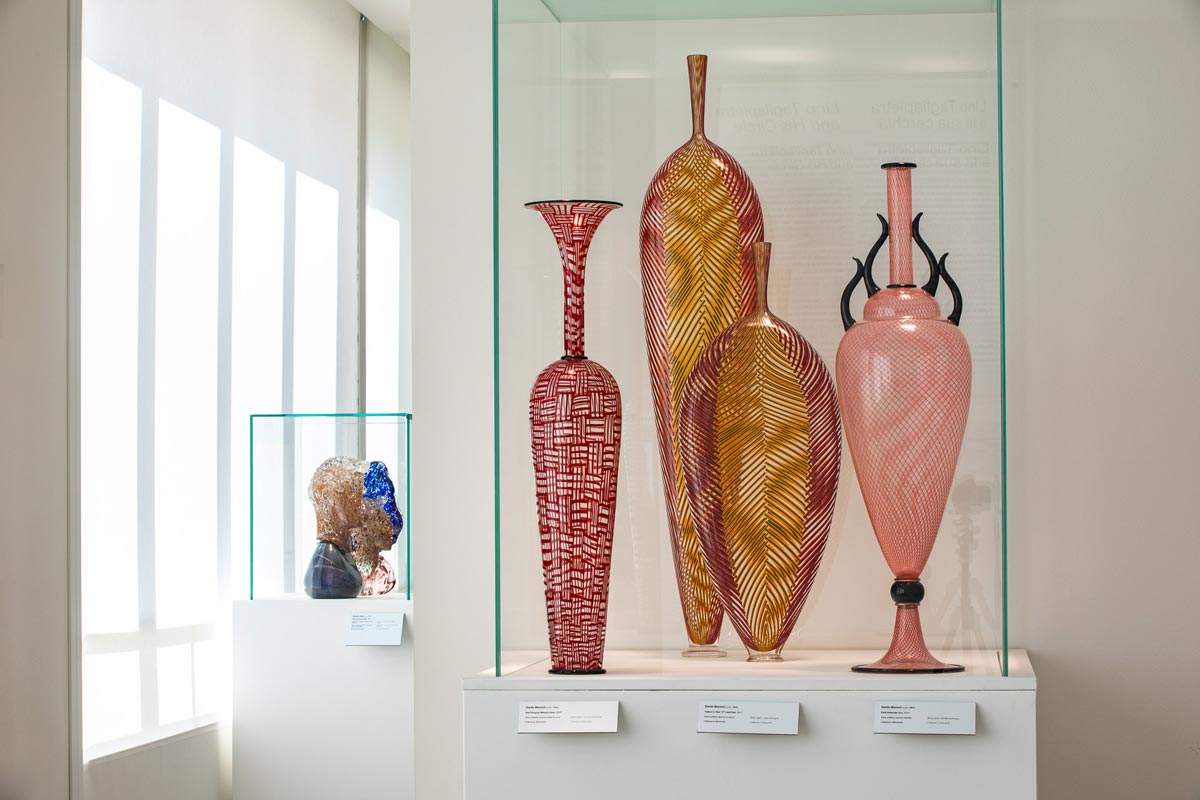In Venice, the spaces of the Giorgio Cini Foundation on theIsland of San Giorgio Maggiore will host, from September 6, 2020 to January 10, 2021, the 18th exhibition of the Le Stanze del Vetro project, entitled Venice and the American Glass Studio, curated by Tina Oldknow and William Warmus, former curators of modern and contemporary glass at The Corning Museum of Glass in New York. The exhibition is a selection of glass works by American artists and designers, which (with 155 pieces from the United States and Europe) examines for the first time the influence of aesthetics and traditional Venetian glassmaking techniques in American Studio Glass from the 1960s to the present.
It is the first to examine in depth the influence of aesthetics and traditional Venetian glassmaking techniques on American Studio Glass from the 1960s to the present. Among the most signifi cative pieces offered by Venice and the American Studio Glass is Laguna Murano Chandelier, the spectacular glass work created in Murano in 1996 by Dale Chihuly together with masters Pino Signoretto and Lino Tagliapietra and exhibited for the first time outside the United States, in the Carnelutti Room of the Giorgio Cini Foundation. A tangible testimony to the long collaboration and contamination that has taken place between American and Venetian artists in contemporary American glass, the Laguna Murano Chandelier was made for the Chihuly Over Venice project, which consisted of installing a series of sculptures both outside and inside the lagoon city: although the chandelier was created for the occasion, it has never been exhibited outside the United States.
The aim of the exhibition is to demonstrate the enduring and versatile legacy of Venetian glassmaking in America by analyzing the impact Venice has had on contemporary American glass art. It also examines how American artists and Venetian masters (especially Lino Tagliapietra and Pino Signoretto) renewed the vibrancy of a historic craft language and how they further developed it to create magnificent works of art. Many of the artists in the exhibition have had a profound influence on the development of glass in Studio Glass, either by teaching and working with other artists or by using traditional Venetian glassmaking techniques to create unique new works. Pioneering artists such as Dale Chihuly and Benjamin Moore went to Venice, learned the techniques, and then invited Venetian masters to the United States to teach. While Chihuly made a number of Venetian-inspired series during his long and prolific career, Moore’s body of work, on the other hand, focuses specifically on Venetian ideas. Richard Marquis, who also stayed in Venice, developed entirely new uses for the Venetian mosaic technique, known as murrina, for his American flag-inspired objects, Marquiscarpa teapots and vases.
Other artists, such as Dante Marioni, Nancy Callan and James Mongrain learned from the glass pioneers of Studio Glass, but more importantly they came into contact with the techniques of the Venetian masters early in their careers. They each draw on the history of Venetian glass in very different ways to create interesting new vessels, objects, and installations. While some artists focused only on vases, others turned to sculpture, such as William Morris and Martin Blank, who studied Venetian sculpture techniques. Starting with making vases, Flora Mace and Joey Kirkpatrick then expanded their vision by trying their hand at making large sculptures, bringing traditional Venetian decoration into new realms. Josiah McElheny, Katherine Gray and Norwood Viviano represent a new generation of artists working in the Venetian style by approaching glass in a more narrative way, using objects to tell landscapes and stories.
The exhibition aims to show that today’s artists (whether working exclusively with glass or approaching this material while coming from other fields), thanks to free access to studios, continue to push forward the traditional boundaries of glass art. An illustrated catalog, published by Skira for Le Stanze del Vetro, completes the exhibition: the volume has within it an introduction by Laura de Santillana, the recently deceased Venetian artist and designer, granddaughter of Paolo Venini, founder of the renowned Venini glassworks in Murano; a historical essay by Tina Oldknow; a critical essay by William Warmus; and other important perspectives by Venetian glass historian Rosa Barovier Mentasti, American glass historian Howard Lockwood, and artist and independent curator Kim Harty.
Venice and the American Glass Studio opens daily (except Wednesday, closing day) from 10 a.m. to 7 p.m. Info on the Le Stanze del Vetro website and the Cini Foundation website.
 |
| How Venetian glass influenced American Studio Glass: an exhibition in Venice |
Warning: the translation into English of the original Italian article was created using automatic tools. We undertake to review all articles, but we do not guarantee the total absence of inaccuracies in the translation due to the program. You can find the original by clicking on the ITA button. If you find any mistake,please contact us.